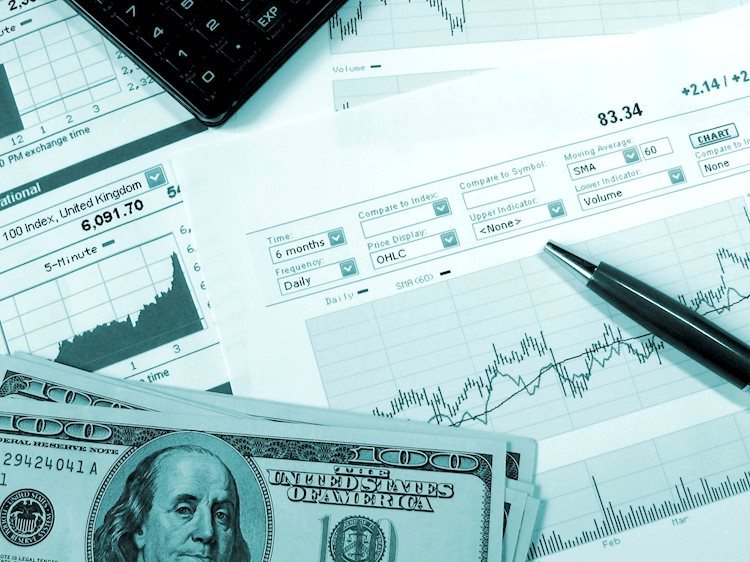- The DXY exhibits mild daily gains in Friday’s session.
- The Federal Reserve’s measured approach alongside a robust labor market reduces expectations of rate cuts.
- The market expects no chance for a March rate cut and less than a 25% chance of a cut in May.
- Investors keenly await upcoming economic reports for further insights on economic health and implications on the Fed’s stance.
The US Dollar Index (DXY) is currently at 104.10, mildly higher thanks to stable conditions in the American economy. That stability brings down hope of earlier rate cuts by the Federal Reserve (Fed), whose officials are delaying any monetary adjustments. Next week, markets will get January’s Personal Consumption Expenditure (PCE) figures, an important data set on US inflation.
The US economy showcases durable strength as signified by resilient economic activity figures, which may signify a threat to the fight against inflation. Additionally, the robust labor market, marked by lows in jobless claims, further deters prospects for near-term interest rate cuts and, therefore, limits the Greenback’s losses.
Daily digest market movers: US Dollar remains stable as the US economy holds resilient
- The US Dollar trades mildly higher as the market gears up for next week’s Personal Consumption Expenditure (PCE) figures from January, setting a quiet tone for Friday’s session.
- Market expectations indicate a decreased likelihood of a rate cut in the near term as indicated by the CME FedWatch Too with low odds of easing in March or May. A strong US domestic economy and resilient labor market contribute to maintaining the Fed’s current stance, delaying the easing to June.
Technical analysis: DXY bulls close the week in a stable manner
The indicators on the daily chart reflect mixed sentiment with both buying and selling forces battling for dominance. On one hand, the Relative Strength Index (RSI), although flat, is stationed in positive territory, hinting toward underlying bullish strength. This bullishness is supported by the DXY’s positioning above the 20-day and 200-day Simple Moving Averages (SMAs), highlighting the resilience of buyers over a longer term.
On the contrary, the Moving Average Convergence Divergence (MACD) shows rising red bars, indicating that selling momentum is building up. Moreover, the index’s positioning below the 100-day SMA suggests that bears have not completely withdrawn from the game.
It’s worth noting that the 20 and 100-day SMAs are about to perform a bullish crossover, which would provide additional traction to the buyers and push the DXY higher.
US Dollar FAQs
The US Dollar (USD) is the official currency of the United States of America, and the ‘de facto’ currency of a significant number of other countries where it is found in circulation alongside local notes. It is the most heavily traded currency in the world, accounting for over 88% of all global foreign exchange turnover, or an average of $6.6 trillion in transactions per day, according to data from 2022.
Following the second world war, the USD took over from the British Pound as the world’s reserve currency. For most of its history, the US Dollar was backed by Gold, until the Bretton Woods Agreement in 1971 when the Gold Standard went away.
The most important single factor impacting on the value of the US Dollar is monetary policy, which is shaped by the Federal Reserve (Fed). The Fed has two mandates: to achieve price stability (control inflation) and foster full employment. Its primary tool to achieve these two goals is by adjusting interest rates.
When prices are rising too quickly and inflation is above the Fed’s 2% target, the Fed will raise rates, which helps the USD value. When inflation falls below 2% or the Unemployment Rate is too high, the Fed may lower interest rates, which weighs on the Greenback.
In extreme situations, the Federal Reserve can also print more Dollars and enact quantitative easing (QE). QE is the process by which the Fed substantially increases the flow of credit in a stuck financial system.
It is a non-standard policy measure used when credit has dried up because banks will not lend to each other (out of the fear of counterparty default). It is a last resort when simply lowering interest rates is unlikely to achieve the necessary result. It was the Fed’s weapon of choice to combat the credit crunch that occurred during the Great Financial Crisis in 2008. It involves the Fed printing more Dollars and using them to buy US government bonds predominantly from financial institutions. QE usually leads to a weaker US Dollar.
Quantitative tightening (QT) is the reverse process whereby the Federal Reserve stops buying bonds from financial institutions and does not reinvest the principal from the bonds it holds maturing in new purchases. It is usually positive for the US Dollar.

